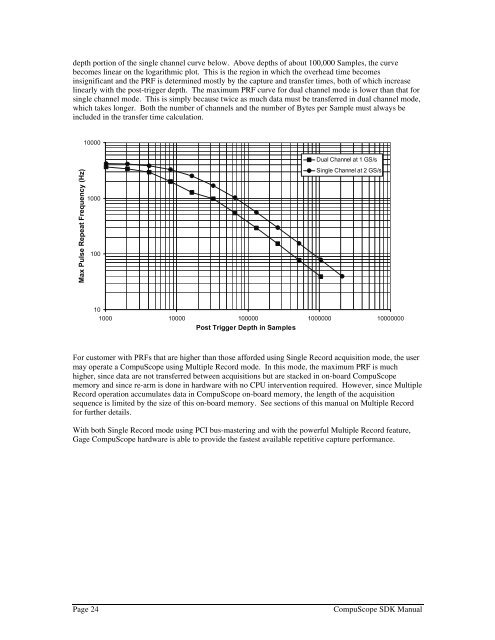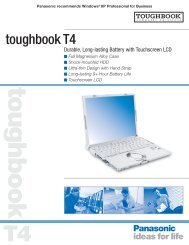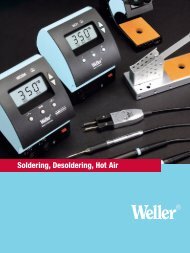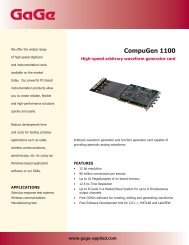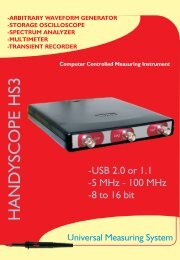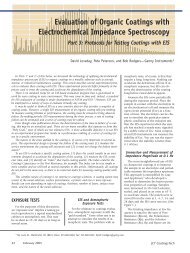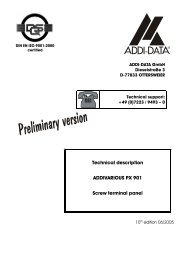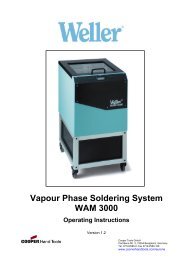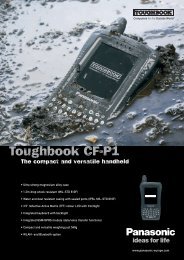CompuScope SDK Manua.. - Egmont Instruments
CompuScope SDK Manua.. - Egmont Instruments
CompuScope SDK Manua.. - Egmont Instruments
Create successful ePaper yourself
Turn your PDF publications into a flip-book with our unique Google optimized e-Paper software.
depth portion of the single channel curve below. Above depths of about 100,000 Samples, the curvebecomes linear on the logarithmic plot. This is the region in which the overhead time becomesinsignificant and the PRF is determined mostly by the capture and transfer times, both of which increaselinearly with the post-trigger depth. The maximum PRF curve for dual channel mode is lower than that forsingle channel mode. This is simply because twice as much data must be transferred in dual channel mode,which takes longer. Both the number of channels and the number of Bytes per Sample must always beincluded in the transfer time calculation.10000Dual Channel at 1 GS/sMax Pulse Repeat Frequency (Hz)1000100Single Channel at 2 GS/s101000 10000 100000 1000000 10000000Post Trigger Depth in SamplesFor customer with PRFs that are higher than those afforded using Single Record acquisition mode, the usermay operate a <strong>CompuScope</strong> using Multiple Record mode. In this mode, the maximum PRF is muchhigher, since data are not transferred between acquisitions but are stacked in on-board <strong>CompuScope</strong>memory and since re-arm is done in hardware with no CPU intervention required. However, since MultipleRecord operation accumulates data in <strong>CompuScope</strong> on-board memory, the length of the acquisitionsequence is limited by the size of this on-board memory. See sections of this manual on Multiple Recordfor further details.With both Single Record mode using PCI bus-mastering and with the powerful Multiple Record feature,Gage <strong>CompuScope</strong> hardware is able to provide the fastest available repetitive capture performance.Page 24<strong>CompuScope</strong> <strong>SDK</strong> <strong>Manua</strong>l


